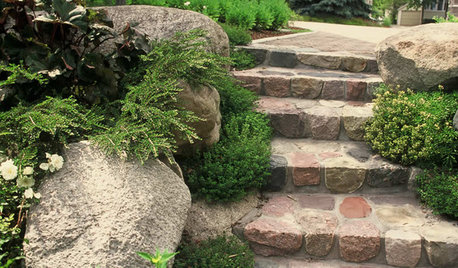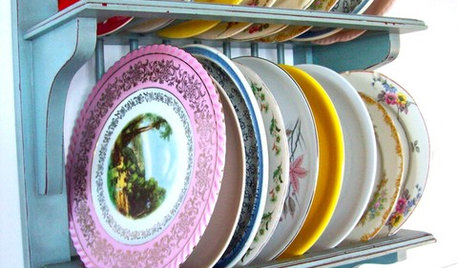earthtainers with lime in the mix, still some BER
jerrya
13 years ago
Related Stories

KITCHEN COUNTERTOPSKitchen Counters: Granite, Still a Go-to Surface Choice
Every slab of this natural stone is one of a kind — but there are things to watch for while you're admiring its unique beauty
Full Story
ORANGEOrange: Still Hot, Hot, Hot
Get fired up to bring in more orange with energizing paint, furnishings, rugs and accessories
Full Story
BLACKMixing Patterns: Start With Black and White
Learn the principles of layering patterns with some dramatic, high-contrast designs
Full Story
DECORATING GUIDESFeel Free to Break Some Decorating Rules
Ditch the dogma about color, style and matching, and watch your rooms come alive
Full Story
EDIBLE GARDENSHerb Garden Essentials: How to Grow Thyme
Common thyme and its flavorful cousins are anything but ordinary in the garden
Full Story
DECORATING GUIDESBeautiful Living Rooms Mix Comfort and Style
Get comfy without the frumpy with these ideas for making 7 living room styles feel welcoming and relaxing
Full Story
WHITEGo Ahead, Mix Brights With Whites
Electrify your space by adding a splash of vibrant hues to your white room
Full Story
ENTERTAININGMix Your Plates for Memorable Table Settings
Hodgepodges are happenin’ — learn how to combine different-style dishes, silverware and glassware for a highly personal look
Full Story
LIGHTINGMix Your Lamp Styles for Major Interest
Unpair those light fixtures for unrivaled personality and appeal. Here’s how to do it right
Full Story
GARDENING GUIDESVegetables and Flowers Mix in Beautiful Edible Gardens
Ornamentals, meet your edible garden mates. We know you'll get along just beautifully
Full Story







rnewste
jerryaOriginal Author
Related Professionals
Surprise Landscape Contractors · Berkley Landscape Contractors · East Patchogue Landscape Contractors · Goodlettsville Landscape Contractors · Hilton Head Island Landscape Contractors · Oklahoma City Landscape Contractors · Waipahu Landscape Contractors · Golden Valley Landscape Contractors · Marietta Window Contractors · Estero Window Contractors · Mamaroneck Window Contractors · Libertyville Fence Contractors · Los Angeles Fence Contractors · North Miami Beach Fence Contractors · Saratoga Springs Fence Contractorsdancinglemons
tapla (mid-Michigan, USDA z5b-6a)
rnewste
jerryaOriginal Author
tapla (mid-Michigan, USDA z5b-6a)
jerryaOriginal Author
tapla (mid-Michigan, USDA z5b-6a)
oderus_urungus
jll0306
tapla (mid-Michigan, USDA z5b-6a)